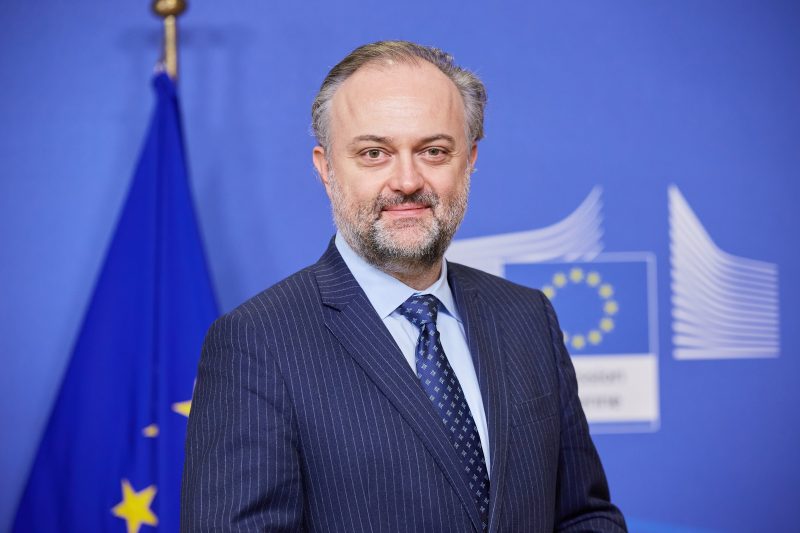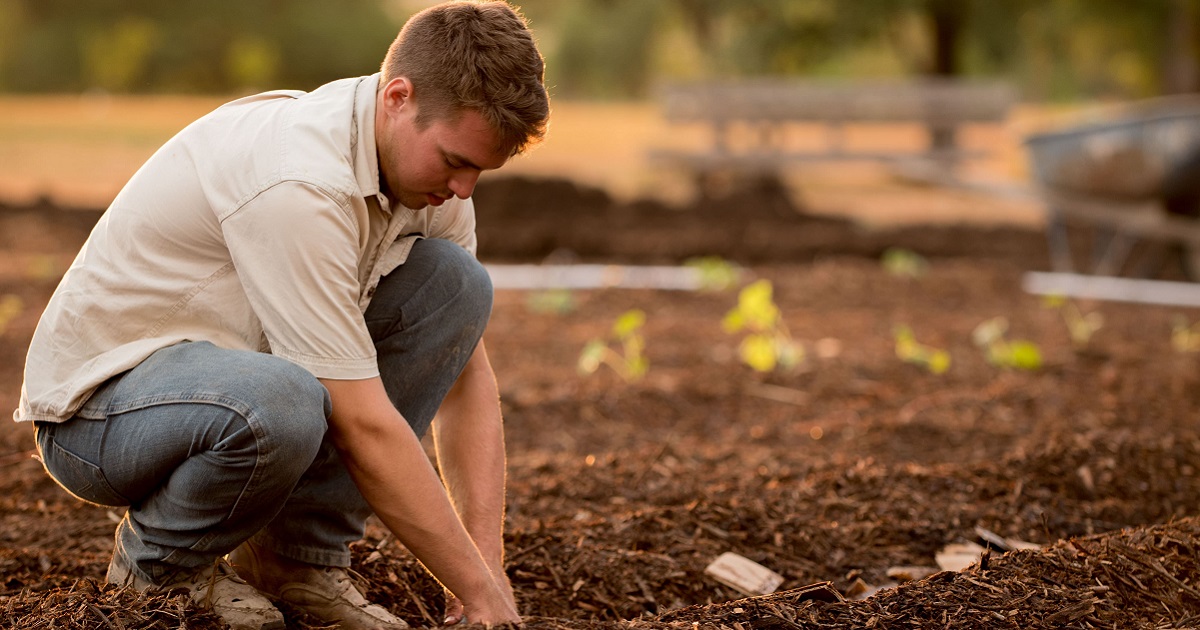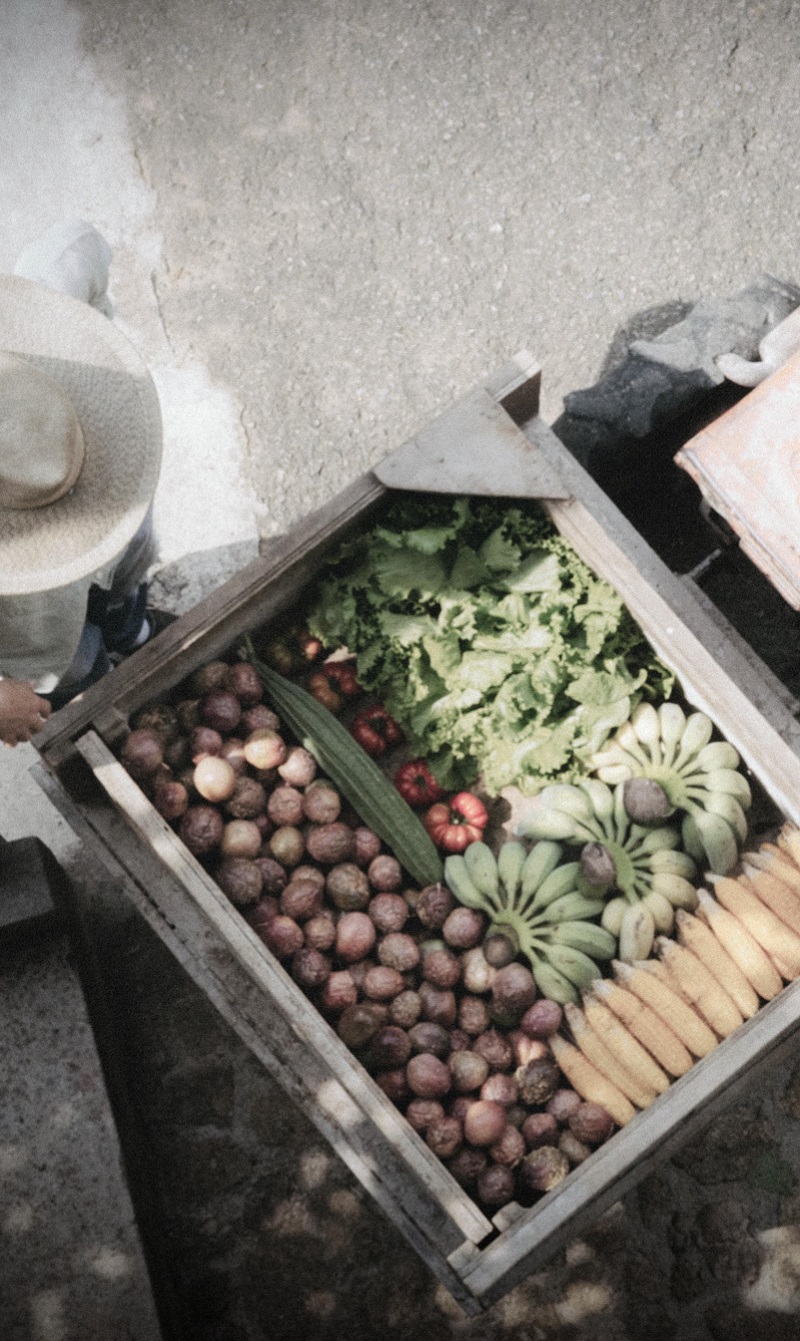Being Agriculturally Sound
Prior to speaking at WIEF-SIDC POWERTALK session on Post Pandemic Economic Landscape: Building Resilient Industries on 7 April 2021, Head of Cabinet of Commissioner for Agriculture at the European Commission, Maciej Golubiewski, looks at ways to ensure a resilient agricultural industry.
One the of the realisations the COVID-19 pandemic brings to the fore is the importance of a robust and resilient food system. The pandemic affected all industries and sectors in the economy, and this was also the case for the European Union’s (EU) agricultural sector. Still, agricultural production and the food supply chain as a whole were remarkably resilient. We successfully avoided a food crisis on top of a health crisis. COVID-19 has also demonstrated the advantages of shorter production chains securing closer ties between producers, processors and consumers. We must foster shorter chains while building on the positive elements of international trade to make the world food system more efficient and stable.

Challenges Lead to Solutions
The EU’s Common Agricultural Policy has proven to be a very suitable tool to ensure that food is efficiently produced, distributed and that it reaches EU citizens. The impact of the pandemic varies by sector and even by product type. Farmers producing crops largely destined to the food services sector couldn’t shift easily to the retail sector and faced most challenges. We can think of high value meat cuts or wine, for example.
The Commission introduced several measures to support producers and to ensure that food continued to reach consumers. These included exceptional measures to address the effects of the pandemic on the agri-food sector, the creation of so-called ‘Green Lanes’ to ensure continued flow of food across borders and guidelines to ensure seasonal cross-border workers could continue to work in the agricultural sector.
Thanks to its market orientation, EU agriculture and food supply chains have quickly adapted to new trends, such as more digitisation and a refocus use of agri-food products for home cooking rather than food services. Although we were successful this time around, we can’t rest on our laurels. We need to work together to be prepared for future crises threatening food security. In its Farm to Fork Strategy, published in May 2020, the Commission proposes a contingency plan to ensure food supply and food security in the EU in times of crises, as well as to create a legislative framework for sustainable food systems.
Policies that Encourage Sustainability
The European Green Deal is our new growth strategy that aims to transform the EU into a fair and prosperous society with a modern, resource efficient and competitive economy. We aim for an economy with no net greenhouse gas (GHG) emissions in 2050 and with economic growth decoupled from resource use. The Green Deal aims to accelerate and underpin the ongoing transition in all sectors. Agriculture, the agri-food industry and forestry will naturally play a decisive role in delivering this transition.
Farmers, often the first to suffer from climate change, are called upon to actively participate in this transition. We must ensure they can make a living with their farming activity and turn the transition into an opportunity. The Farm to Fork Strategy, aims to translate the Green Deal into action, and to create fairer, healthier and environmentally friendly food systems in the EU by 2030. Delivering on this ambitious vision requires a transition at all stages of the food supply chain, requiring efforts and responsibility from all actors. The objective is to move towards a sustainable food system with a neutral or positive environmental impact and create a food environment, which makes healthy diets the easy choice for EU citizens.
Set for Revitalisation
NextGenerationEU is the EU temporary recovery instrument that will lead the way out of the crisis and lay the foundations for a modern and more sustainable Europe. In total, the foreseen budget additional to the Multiannual Financial Framework 2021-2027 is EUR750 billion. The Recovery and Resilience Facility (RRF, EUR672.5 billion) and the additional resources assigned via the Rural Development Programmes (EUR7.5 billion) are the most relevant to realise actions in rural areas and the agricultural sector to recover from the COVID-19 crisis.
On the RRF:
- member states will have to explain how they’ll make use of these funds in their national recovery and resilience plans
- the RRF will provide large-scale financial support to reforms and investments. The objectives are to mitigate the economic and social impact of the COVID-19 pandemic and to strengthen and increase sustainability of EU economies. This will increase their resilience and preparedness for the challenges posed by the green and digital transitions
- the plans should present a balanced response to the economic and social situation, be consistent with the challenges and priorities identified in the European Semester, present the complementarities with other sources of EU funding to avoid double funding and none of the measures in the plans should harm the environment
The recovery and resilience of agriculture and rural areas are key challenges to achieve the green and digital transitions:
- for the green transition, it’s important to encourage environmentally sustainable agricultural practices including organic farming as well as investments in land-based carbon sinks and circular bio-economy sector
- on the digital transition, we put emphasis on the need to reduce the rural or urban divide that exists both on broadband coverage and on skills
- the Commission will assess member states plans on the basis of transparent criteria, ensuring that they effectively address the identified challenges and priorities
Those NextGenerationEU funds, which will be injected into the Rural Development Programmes for the transition period 2021 and 2022, will in their entirety be spent in rural areas. Within the Rural Development Programs, recovery funds have to be directed towards the types of measures with the highest potential to deliver on the NextGenerationEU objectives. Financial ring-fencings apply:
- a share of environmental and climate measures at least as high as those programmed under current rural development programmes (principle of non-regression)
- at least 37 per cent to be dedicated to measures that are beneficial for the environment and climate, but also possibly animal welfare and LEADER
- at least 55 per cent to be dedicated to investments, support for farm and business development, provision of basic services and support for cooperation activities among rural stakeholders.
Developing, Innovating, Thriving
New technologies and their adoption by European farmers are key drivers in maintaining EU agriculture competitive on a global market. Diverse innovations, including technological innovations, have been and are transforming the way farmers manage land, produce food for us and respond to changing consumers’ preferences. In the period 2014-2020, we have developed and followed a long-term strategy for EU agricultural research and innovation (R&I). To put the strategy into action, we’ve successfully been implementing it, building on the strengths of two European policies, CAP and the R&I Framework Programme (Horizon 2020), working in close synergy under the common umbrella of the European Innovation Partnership ‘Agricultural Productivity and Sustainability’ (EIP-AGRI).
As a result, today under Horizon 2020 and Rural Development Programme, we have over 300 multi-actor research projects and 2,000 EIP-AGRI operational groups that provide an abundance of new knowledge and diverse innovative solutions to support farmers in transforming their production methods.
An example of a R&I project that transforms Europe’s agriculture model as we speak is the EU-funded project FATIMA which developed several tools, including a range of high-resolution maps and calculators for determining nutrient and water requirements. These tools help farmers finetune the amount of nutrients and water they actually need. Thus, avoid over-fertilisation and save water. Another development is a farm-level cost benefit analysis, a complementary tool that helps farmers decide which technology to adopt or service to buy. The tool enables farmers to assess farm profitability on one hand and the economic feasibility of a specific FATIMA tools on the other.
R&I, digitalisation and new technologies are also at the heart of the Farm to Fork Strategy. Digital technologies have the potential to increase the sector’s sustainability and competitiveness. They can transform agriculture by helping farmers work more precisely, efficiently and sustainably. They add value to all types of farming – organic farming as well as conventional framing, to large farms, as well as to small farms.
Moreover, the uptake of new technologies brings benefits to all stakeholders, not only to farmers. National administrations, all citizens and finally EU policymakers can benefit from digitalisation. With new technologies it’s also possible to assist farmers in complying with the CAP as well as other rules, and consequently, avoiding penalties. Plus, it help reduce costs for administration.
A Youthful Venture
When we’re trying to safeguard the future of our rural areas there’s one group of people who stand out: young people! If we don’t manage to support young people to make a decent living in rural areas we’ll lose on multiple fronts. Young farmers have a key role to play in the transition to a sustainable and innovative agriculture. They hold the key to attract more young people to agriculture, while leading by example. We’re convinced that young farmers will play a key role in the future of EU agriculture and rural areas. We’re often encouraged by the enthusiasm and willingness of young framers to sign up for what isn’t always an easy and comfortable life. We need to build on this motivation and seek solutions to the well-known issues of access to land, finance and knowledge.
Generational renewal is a priority for CAP: looking at the current statistics, the share of farm managers below 35 years constitutes only about five per cent of all farms in the EU. CAP has had already a positive effect on investing in generational renewal but we must continue to address the decline of the proportion of young farmers. Rural Development Policy plays a key role in supporting young farmers to start farming and develop further. It does so, not only by providing targeted setting-up support, but also by supporting training and knowledge transfer actions, offering diversification opportunities and financing various types of investments, including broadband.
All these measures have the common objective to make rural areas attractive places to live in, to work, and to offer opportunities to young people including young farmers. Also, the first pillar of CAP provides enhanced income support for newly set up young farmers. For the future, we’ve put forward a policy framework for CAP which is flexible enough to support the different needs of young farmers. Attracting new young farmers as well as facilitating their business development has been identified as one of the nine main CAP objectives for next period. This ensures an even more comprehensive, strategic approach for support of young farmers.
Member states will have to present, in their CAP Strategic Plans, a sound strategy to address the generational renewal challenge in their territory and explain the interplay with national instruments with a view of improving the consistency between Union and national actions, regarding access to land, access to finance, to advice. The next period will provide a basis for an increased and more focused financial support. The European Commission (EC) proposes that member states dedicate an amount corresponding to at least two per cent of their national envelope for direct payments specifically to generational renewal, in the form of a complementary income support and installation grants. The EC doesn’t oppose an increase of the ring-fenced amounts, as is proposed by the European Parliament.
However, some barriers to generational renewal need to be lifted at national level – as they are Member State competence – such as land market regulation, taxation, inheritance law and territorial planning. The EC is also looking even further into the future. In June we will issue a communication on the long-term vision for rural areas. The aim is to highlight specific challenges and explore innovative, inclusive and sustainable solutions to keep rural areas attractive as living spaces.
Register now to attend the WIEF-SIDC POWERTALK Post-pandemic Economic Landscape: Building Resilient Industries. The virtual session is happening on 7 April 2021 at 3pm (MYT). It’s MYR 371 nett per person and eligible for 5 CPE points.
Main photo by Jed Owen on Unsplash.




